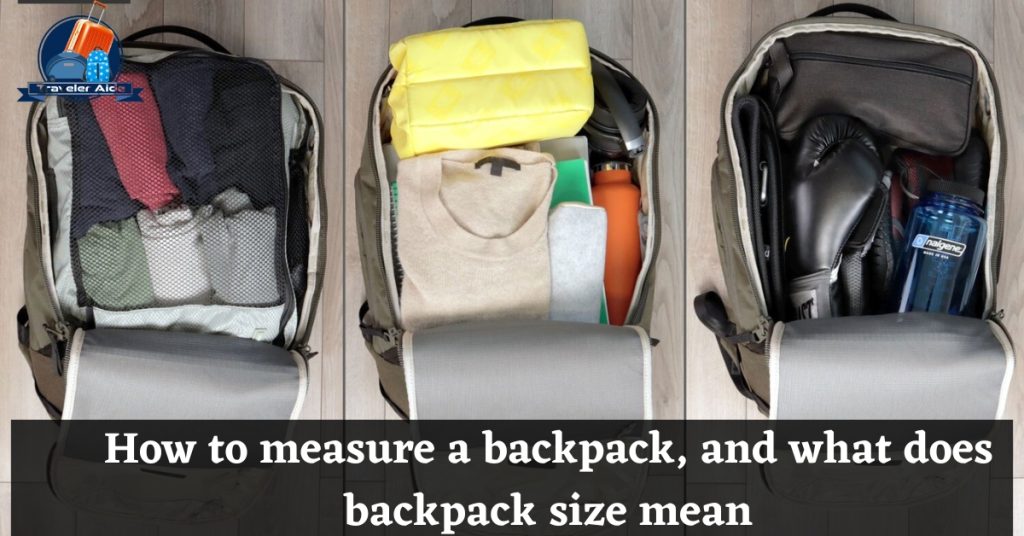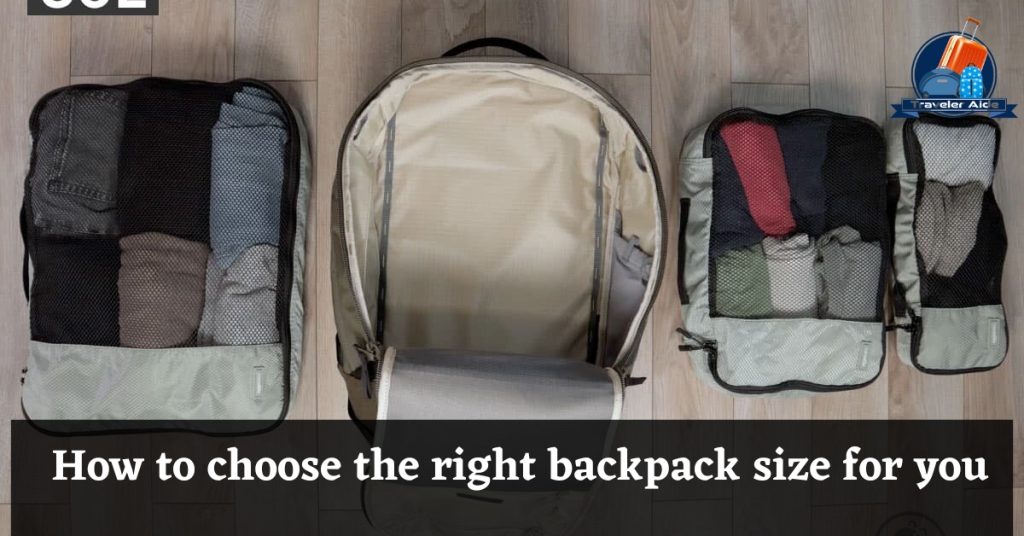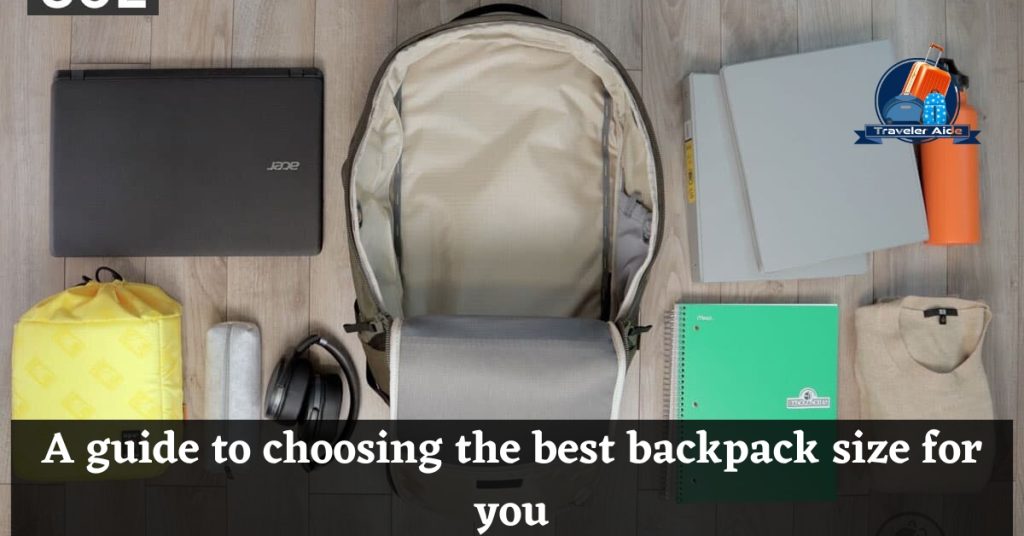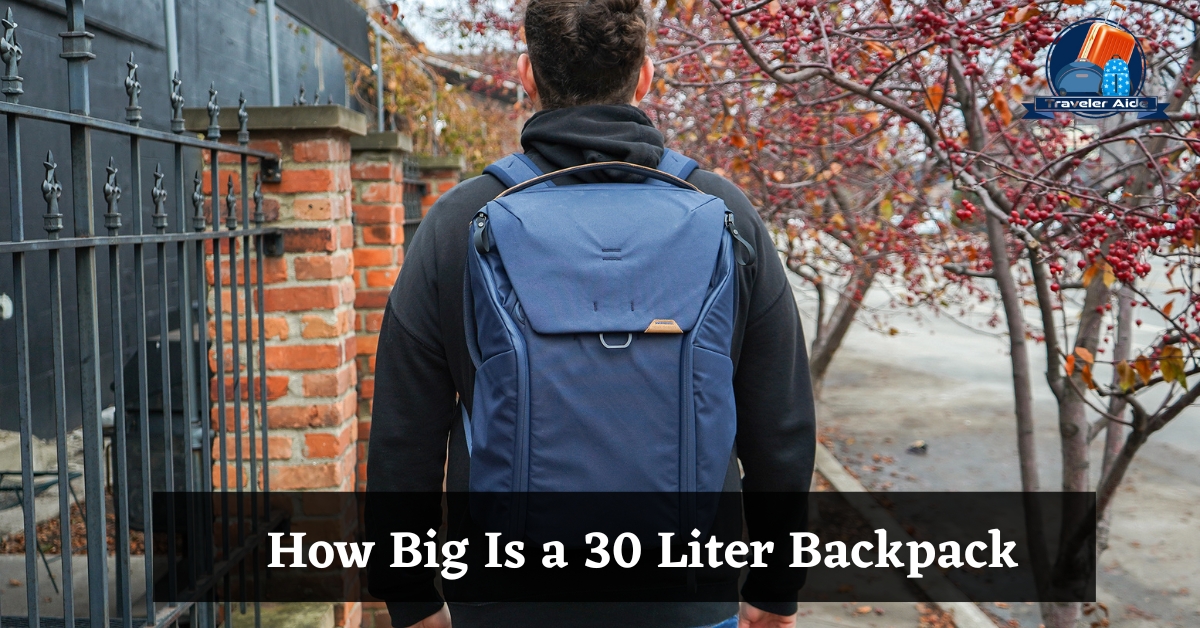How big is a 30 liter backpack? This is a question many people ask themselves when they are in the market for a new backpack. Backpacks come in many sizes, but 30 litres is a pretty big backpack for a daily commute. If you’re in the market for a new backpack, but are unsure about how big a 30-liter backpack is, keep reading for more helpful information.
What backpack size you should buy
There are several things that you need to consider to help you decide which backpack size you should buy.
The first thing that you need to think about is how long of a trip you are going to take. If you have a hiking trip planned, you may want to consider a larger backpack. Keep in mind that a larger backpack is going to weigh more, so plan.
The next thing you need to think about is how much gear you need to bring. The more gear you need, the larger your backpack will need to be.
Another thing to think about is how often you hike. If you are one to hike every weekend or every couple of weekends, you don’t want a backpack that weighs 40 pounds or more. Instead, you might be interested in something that is lighter but still has plenty of room for all your gear.
The last thing to consider is how much you spend on backpacks. If you are willing to buy a cheaper backpack, you might not get very many bells and whistles. But, if you are willing to spend a little more for a nicer backpack, you may be able to get all the features you want.
How to measure a backpack, and what does backpack size mean

Backpacks come in a huge variety of sizes, from tiny 5-liter daypacks to massive 60-liter expedition bags. So how can you tell how big a backpack is or how much it weighs? Read on to find out.
• Volume is a measurement of space. Backpacks vary in size depending on their volume. When a manufacturer lists a volume for a pack, they’re telling you how much space the bag will take up.
• Cubic capacity is the amount of user-accessible space the bag has. To figure out a pack’s cubic capacity, multiply its volume by the length of its sides.
• You can even measure the cubic capacity of a pack yourself! place the bag flat on the ground, then place a ruler on its side and spread it out to the sides of the bag. Measure the width of the pack, multiply it by the height of the bag, and you’ll have the cubic capacity.
• A backpack’s volume doesn’t affect its weight or carrying capacity. So if the backpack is 30 liters, that doesn’t mean that it weighs 30 pounds or can carry 30 pounds of gear.
• A backpack’s weight is dependent on its materials. Bags made from lighter materials, like polyester and nylon, tend to be lighter, while bags made from things like canvas and leather tend to be heavier.
• A backpack’s capacity is dependent on its frame shape. Most backpacks with more than one compartment can only hold as much stuff as a regular backpack, so their carrying capacity will be less.
A guide to determining the best backpack size for you
When buying a backpack, you need to first determine what size pack you need. Backpacks come in different sizes, and you also need to consider the type of activities you will be doing while wearing your pack.
You will need to decide on the dimensions of the backpack. You will want to buy a pack that is large enough to hold all your essentials, but not so large that it becomes too heavy and bulky. Always consider the size of the pack before making a buy, and opt for a pack that is large enough to accommodate all your items without weighing you down.
If you are backpacking, you will want a backpack that can hold a day’s worth of supplies. A 60-liter pack should fit all your necessary gear, and allow you to bring extra clothing in case it gets cold. For most day hikes, you will need a smaller, 30-liter pack.
If you are a thru-hiker, you will want a pack that is as light as possible. A 30 liter backpack is ideal for most thru-hikes and will allow you to carry all your necessary gear without weighing you down. For extended trips, you will want to opt for a 60-liter pack. These packs have enough space to hold all your gear and allow you to carry extra supplies in case it gets cold or if you need to in a new location.
If you are a backpacker who plans on carrying heavy gear, you may want to opt for a 90-liter pack. These packs are large enough to hold all your gear, and allow you to bring extra supplies in case it gets cold or if you need to in a new location.
How to choose the right backpack size for you based on four main categories

Before you buy a backpack, you need to know what size backpack you need. A backpack can be the difference between an enjoyable hike and a miserable experience. You need to buy a backpack that fits you, Otherwise, it will cause you a lot of pain.
There are four categories that you should use to determine the backpack size that you need. They are:
Volume: Volume refers to how much liquid or volume a pack can hold. For liquids, the volume is measured in liters. So, if the volume is 30 liters, this means that the pack can hold 30 liters of liquid.
Weight: The weight of a backpack refers to how much it weighs. For backpacks, the weight is measured in kilograms. So, if the weight is 2 kilograms, this means that the backpack weighs 2 kg.
Height: The height refers to how tall the backpack is. For backpacks, the height is measured in centimeters. So, if the height is 50 centimeters, this means that the backpack is 50 cm high.
Width: The width refers to how wide the backpack is. For backpacks, the width is measured in centimeters. So, if the width is 40 centimeters, this means that the backpack is 40 cm wide.
These four measurements are all that you need to know to choose a size backpack. Different backpacks have different measurements, and it is important for you to know what measurements you are looking for. For example, if you are looking for a backpack.
A guide to choosing the best backpack size for you based on three more categories

An extensive study of backpack size found that the average backpack contains 30 liters of volume. This marked an increase of 1 liter over last year’s report. Researchers from a private university in France also did their own study. They came to the same conclusion: the average size of a backpack has been growing over time. The average backpack size in 1980 was 22 liters.
20 percent of people who carry backpacks have at least 30 liters of volume. This is a sign of how much space the average person is carrying with them.
Based on this information, researchers created a chart that ranks the backpack sizes people carry based on their average volume. They also put the sizes of the backpacks into three groups: large, medium, and small.
The chart below ranks the backpack sizes people carry based on the average volume they carry:
1. Large backpacks, containing at least 40 liters of volume.
2. Medium backpacks, containing at least 30 liters of volume.
3. Mini backpacks, each containing at least 20 liters of volume.
Conclusion
So, how big is a 30-liter backpack? Usually, the backpack is as roomy as a large tote bag, but they usually weigh less. You definitely don’t want to carry more than 30 liters of weight on your shoulders, so be sure that you have enough stuffed into it. We hope you’ve enjoyed this post on how big a 30-liter backpack is. If you have any questions, please let us know.
Hi there! I’m a Travel Advisor, and I’m a seasoned traveler with a passion for exploring new and exciting destinations. I have visited the heritage sites of several countries and have learned a thing or two about traveling the world in style and comfort.
My expertise lies in finding the perfect balance between luxury and adventure, and I’m always on the hunt for new and unique experiences. I believe that travel should be about creating meaningful connections and cultural exchanges, and I strive to make a positive impact wherever I go.
With 15 years of experience in the travel industry and a wealth of knowledge about destinations near and far, I’m confident in my ability to help plan the perfect trip for any type of traveler. Whether you’re looking for an exotic beach getaway, a bustling city escape, or an adventure-filled road trip, I’ve got you covered.



2 thoughts on “How Big Is a 30 Liter Backpack – Best Guide 2023 !”